 | TODAY IN SCIENCE HISTORY NEWSLETTER - 26 MAY |
| Feature for Today |
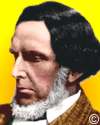 On 26 May 1811, Robert Mushet was born, who developed a method of manufacturing steel (1856) by the addition of manganese, which was an important improvement on the Bessemer process. On 26 May 1811, Robert Mushet was born, who developed a method of manufacturing steel (1856) by the addition of manganese, which was an important improvement on the Bessemer process.A Biography of Robert Forester Mushet can be read from the Dictionary of National Biography (1909) which outlines how he made a useful contribution to the Industrial Revolution yet was unsuccessful in capitalizing on his discoveries. Bessemer, however, greatly benefitted. |
| Book of the Day | |
| |
| Quotations for Today | |
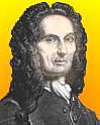 | "The manner of Demoivre's death has a certain interest for psychologists. Shortly before it, he declared that it was necessary for him to sleep some ten minutes or a quarter of an hour longer each day than the preceding one: the day after he had thus reached a total of something over twenty-three hours he slept up to the limit of twenty-four hours, and then died in his sleep." |
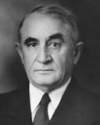 | "Good health is essential to happiness, and happiness is an essential to good citizenship." |
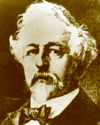 | "It has the property of detonating very violently in certain circumstances. On one occasion a small amount of ether solution of pyroglycerin condensed in a glass bowl. ... When the bowl was heated over a spirit lamp, an extremely violent explosion occurred, which shattered it into small fragments. On another occasion a drop was heated in a test-tube, and exploded with such violence that the glass splinters cut deep into my face and hands, and hurt other people who were standing some distance off in the room." (Describing early experiments on his discovery of nitroglycerin.) |
| QUIZ | |
| Before you look at today's web page, see if you can answer some of these questions about the events that happened on this day. Some of the names are very familiar. Others will likely stump you. Tickle your curiosity with these questions, then check your answers on today's web page. | |
| Births | |
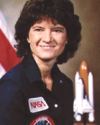 |  The first American woman to orbit the earth was born on 26 May 1951. She flew aboard Space Shuttle Challenger on 18 Jun 1983. Only two other women preceded her in space, both from the former Soviet Union. Accepted into the astronaut corps in 1978, she completed her training as a mission specialist in 1979, and flew on two missions with Challenger, the second in 1984. She has a Ph.D. degree in physics, and was a member of the team chosen to investigate the 1986 explosion of Challenger. The first American woman to orbit the earth was born on 26 May 1951. She flew aboard Space Shuttle Challenger on 18 Jun 1983. Only two other women preceded her in space, both from the former Soviet Union. Accepted into the astronaut corps in 1978, she completed her training as a mission specialist in 1979, and flew on two missions with Challenger, the second in 1984. She has a Ph.D. degree in physics, and was a member of the team chosen to investigate the 1986 explosion of Challenger. Can you name this astronaut? Can you name this astronaut? |
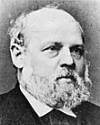 |  Heinrich Geissler was born 26 May 1815. He was a German glassblower for whom the Geissler (mercury) vacuum pump was named, which was capable of an unprecedented (1/100 mm of mercury) low vacuum. With this as a tool, he made another form equipment available to early physicists which was valuable to study the effect of electricity on gases. These produced more detailed studies of the structure of matter. Heinrich Geissler was born 26 May 1815. He was a German glassblower for whom the Geissler (mercury) vacuum pump was named, which was capable of an unprecedented (1/100 mm of mercury) low vacuum. With this as a tool, he made another form equipment available to early physicists which was valuable to study the effect of electricity on gases. These produced more detailed studies of the structure of matter. What is the other equipment known with the Geissler name? What is the other equipment known with the Geissler name? |
| Deaths | |
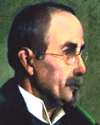 |  John Jacob Abel (1857-1938) was an American pharmacologist and physiological chemist who made important contributions to a modern understanding of the ductless, or endocrine, glands. In 1897 he reported the isolation of a derivative of epinephrine (adrenaline). Abel also investigated the functions of the kidney and devised a vividiffusion apparatus for removing toxins from the blood of living animals, an apparatus that is widely regarded as a forerunner of the artificial kidney. John Jacob Abel (1857-1938) was an American pharmacologist and physiological chemist who made important contributions to a modern understanding of the ductless, or endocrine, glands. In 1897 he reported the isolation of a derivative of epinephrine (adrenaline). Abel also investigated the functions of the kidney and devised a vividiffusion apparatus for removing toxins from the blood of living animals, an apparatus that is widely regarded as a forerunner of the artificial kidney.  What other important human body substance did Abel isolate and crystallize in 1926? What other important human body substance did Abel isolate and crystallize in 1926? |
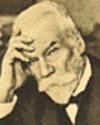 |  Ernest Solvay (1838-1922) was a Belgian industrial chemist who invented the Solvay Process (1863), a commercially viable process for producing a chemical widely used in the manufacture of such products as glass and soap. Solvay's successful design used an 80 foot tall high-efficiency carbonating tower in which ammoniated brine trickled down from above and carbon dioxide rose from the bottom. Plates and bubble caps helped create a larger surface over which the two could react. Ernest Solvay (1838-1922) was a Belgian industrial chemist who invented the Solvay Process (1863), a commercially viable process for producing a chemical widely used in the manufacture of such products as glass and soap. Solvay's successful design used an 80 foot tall high-efficiency carbonating tower in which ammoniated brine trickled down from above and carbon dioxide rose from the bottom. Plates and bubble caps helped create a larger surface over which the two could react. What is the useful product of this process? What is the useful product of this process? |
| Events | |
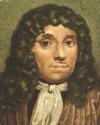 |  On 26 May 1676, Antonie van Leeuwenhoek applied his hobby of making microscopes from his own handmade lenses to observe some water running off a roof during a heavy rainstorm. On 26 May 1676, Antonie van Leeuwenhoek applied his hobby of making microscopes from his own handmade lenses to observe some water running off a roof during a heavy rainstorm. What did he find in the runoff water that was not present in pure rainwater? What did he find in the runoff water that was not present in pure rainwater? |
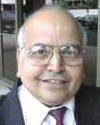 |  On 26 May of a certain year, Satya Pal Asija was the first in the U.S. to receive a patent for computer software for his computer program Swift-Answer (an acronym for "Special Word Indexed Full Text Alpha Numeric Storage With Easy Retrieval") that allows users to retrieve narrative information from computers in a human-like manner. The program responds to a user's questions with the most likely answer - despite the user's errors in syntax, punctuation, spelling, and grammar. On 26 May of a certain year, Satya Pal Asija was the first in the U.S. to receive a patent for computer software for his computer program Swift-Answer (an acronym for "Special Word Indexed Full Text Alpha Numeric Storage With Easy Retrieval") that allows users to retrieve narrative information from computers in a human-like manner. The program responds to a user's questions with the most likely answer - despite the user's errors in syntax, punctuation, spelling, and grammar. In what decade was patent issued? In what decade was patent issued? |
 In 1931, a microfilm camera was patented by New York City banker, George McCarthy. He developed the first practical commercial microfilm use in the 1920's and was issued an earlier patent. In 1931, a microfilm camera was patented by New York City banker, George McCarthy. He developed the first practical commercial microfilm use in the 1920's and was issued an earlier patent. For what application was this microfilm camera designed? For what application was this microfilm camera designed? | |
| Answers |
When you have your answers ready to all the questions above, you'll find all the information to check them, and more, on the May 26 web page of Today in Science History. Or, try this link first for just the brief answers. Fast answers for the previous newsletter for May 25: muon neutrino; Igor Sikorsky; aluminium; Einstein; "...of landing a man on the Moon and returning him safely to the Earth.". |
| Feedback |
 If you enjoy this newsletter, the website, or wish to offer encouragement or ideas, please send feedback by using your mail reader Reply button. If you enjoy this newsletter, the website, or wish to offer encouragement or ideas, please send feedback by using your mail reader Reply button. |
--
If you do not want to receive any more newsletters, this link
To update your preferences and to unsubscribe visit this link
If you do not want to receive any more newsletters, this link
To update your preferences and to unsubscribe visit this link
! !



Δεν υπάρχουν σχόλια:
Δημοσίευση σχολίου